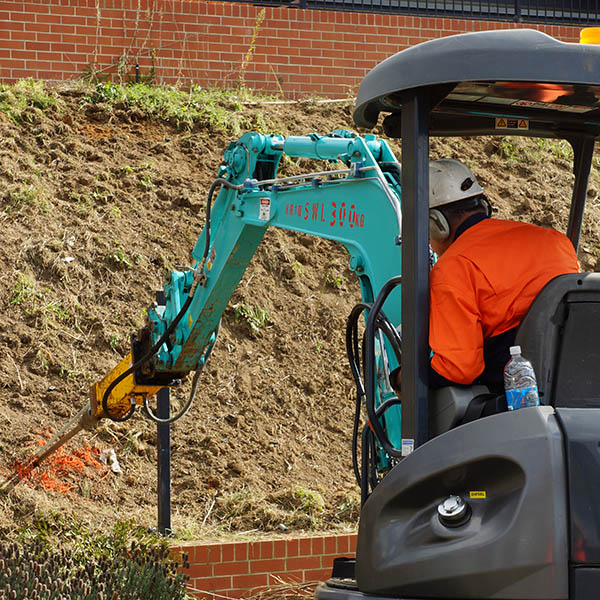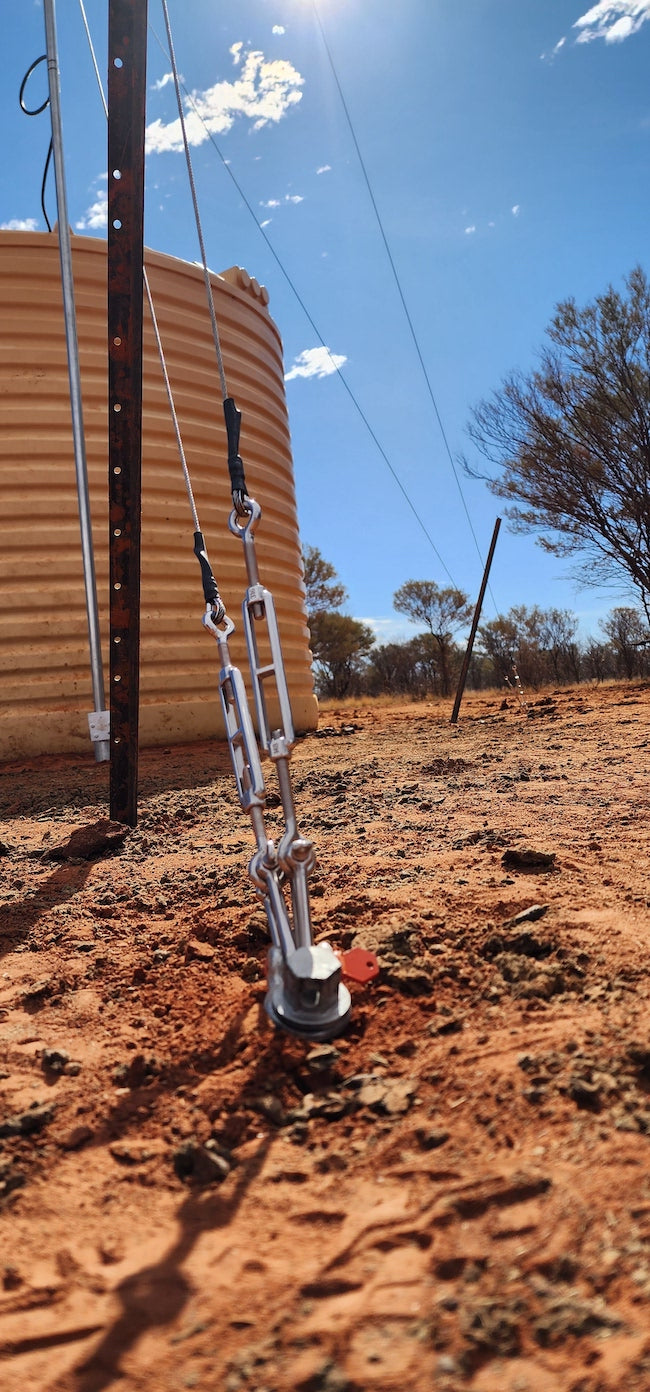Troubleshooting Guide: Manta Ray anchors Show Signs of Movement
Wiki Article
Just How Durable Earth Anchors Job: A Comprehensive Overview to Dirt Anchoring Solutions
Sturdy Earth anchors play an important duty in supplying security and assistance in numerous construction applications. By installing deeply right into the ground, they resist upright and side forces successfully. Different types of supports accommodate various dirt problems, making them flexible. Comprehending their auto mechanics and setup strategies is crucial for making the most of performance. What variables influence their performance, and just how do they contrast to standard approaches? The solutions might amaze you.Recognizing Durable Earth Anchors
Sturdy Earth supports work as crucial components in various building and landscaping tasks, supplying stability and assistance in challenging dirt problems. These supports function by being installed right into the ground, where they resist lateral and vertical forces. Their layout enables for secure accessory to frameworks, ensuring they remain anchored versus soil motion or external loads.The performance of heavy-duty Earth supports greatly depends upon the kind of soil and the anchor's installation deepness. Correct installment strategies are crucial, as they identify the support's holding capacity. Environmental aspects, such as wetness and freeze-thaw cycles, can likewise impact performance.These anchors are frequently used in applications varying from protecting fences and preserving walls to supporting short-lived frameworks throughout unfavorable climate condition. Recognizing the principles behind durable Earth supports is important for experts looking for to enhance the durability and security of their tasks.Types of Heavy-Duty Earth Anchors
Numerous kinds of heavy-duty Earth anchors are developed to satisfy particular needs based upon dirt problems and job requirements. Helical anchors, featuring screw-like blades, are reliable in softer soils, offering high load capabilities and very easy installation. Driven supports, which are inculcated the ground, are suitable for rocky surfaces and give prompt tons support. Tie-back anchors are generally utilized in preserving wall surface applications, enabling side support by anchoring into the ground at an angle. Another type is the cast-in-place anchor, perfect for concrete applications, as they are integrated right into foundations for enhanced security. Ultimately, soil screw anchors are flexible alternatives that can be utilized in numerous soil kinds, offering trustworthy stress and compression capacities. Each kind offers distinctive applications, making certain stability and safety and security in building and landscaping jobs. Comprehending these alternatives enables educated choices in selecting the ideal Earth securing option.The Mechanics of Soil Anchoring

Comprehending the mechanics of dirt anchoring needs an evaluation of numerous kinds of Earth supports and their setup strategies. Each anchor kind offers special qualities that influence its effectiveness in various soil conditions. Appropriate installation methods are vital for maximizing the securing system's security and efficiency.
Kinds Of Earth Anchors
Earth supports, vital parts in dirt anchoring systems, can be found in several kinds, each made for particular applications and soil conditions. The most common kinds consist of screw supports, which are twisted right into the ground, giving solid side resistance. Helical supports feature blades that permit reliable setup in various dirt types, making them appropriate for both irreversible and temporary applications. Driven supports, generally made from steel, are inculcated the dirt and work in rough or dense settings. Auger anchors use a helical layout to assist in setup in softer dirts. Finally, plate anchors include a level plate hidden flat, dispersing load over a bigger location, ideal for applications needing high lots abilities in cohesive soils.Installation Techniques Clarified
Appropriate installment techniques are essential for the effectiveness of soil anchoring systems. The procedure generally starts with website evaluation, validating the selected area can support the anchor's lots. After determining the correct support kind, appropriate opening deepness and angle should be established. The installment involves driving the support right into the ground using customized tools, such as manual or hydraulic motorists, to attain ideal embedment. Post-installation, tensioning the anchor is important to assure stability; this is usually confirmed with lots testing. In addition, surrounding soil problems must be kept track of to stop displacement. Complying with these methods not only improves the anchor's performance but likewise lengthens its lifespan, providing trustworthy support for various applications.Applications of Heavy-Duty Earth Anchors
While heavy-duty Earth anchors are usually related to building and landscape design, their flexibility reaches a variety of applications throughout various markets. In civil design, they give crucial assistance for preserving wall surfaces, guaranteeing stability in locations susceptible to soil disintegration. The marine industry makes use of these anchors for securing docks and marinas, preventing activity triggered by currents and trends. Additionally, in the telecom industry, heavy-duty Earth supports are significant for supporting cell towers and various other tall structures versus wind pressures. Agricultural applications likewise profit, as these anchors can safeguard frameworks like greenhouses and livestock fence, ensuring they stand up to rough climate condition. In eco-friendly power tasks, such as wind farms, Earth anchors play a vital role in safeguarding turbine foundations, improving overall safety and security and efficiency. This broad variety of applications highlights the adaptability and reliability of sturdy Earth supports throughout various fields.Benefits Over Traditional Anchoring Approaches
Conventional anchoring methods have actually long been counted upon for security, sturdy Earth supports offer substantial advantages that boost performance and performance. One major advantage is their remarkable load-bearing ability, which allows them to hold up against greater pressures without failure. This strength makes them excellent for demanding applications, such as in construction and energy installations.Additionally, heavy-duty Earth anchors are created for much deeper installment, offering higher security in numerous dirt conditions, including sandy or loosened dirts. Their resistance to corrosion and ecological variables guarantees a longer see this here life expectancy and minimized upkeep costs compared to conventional methods.Moreover, these supports can be mounted with marginal disturbance to the surrounding area, preserving the stability of the landscape. On the whole, heavy-duty Earth supports provide a reliable and effective solution for securing demands, surpassing the constraints typically linked with conventional anchoring methods.Setup Process and Finest Practices
The installation procedure for soil anchoring solutions begins with detailed prep work and website evaluation to ensure peak efficiency. Following this, a detailed setup guide provides clear instructions for efficient implementation (tensile load anchors). Adhering to these best techniques is important for achieving durable and trusted anchoring outcomesPrep Work and Site Analysis
Efficient prep work and complete site evaluation are essential actions in the setup of soil securing options. Prior to installation, the dirt type should be evaluated to establish its bearing ability and suitability for securing. Carrying out a geotechnical study can offer important info about dirt make-up, moisture degrees, and potential ground activity. Additionally, identifying existing structures, vegetation, and energies is vital to avoid disturbance during installment. The area should be free from debris and barriers to ensure secure gain access to for equipment. Weather need to likewise be checked, as negative conditions can impact both safety and setup efficiency. By diligently preparing the website and assessing all pertinent aspects, the chance of effective support performance is considerably enhanced.Step-by-Step Installment Guide
A thorough installation process is essential for achieving optimal efficiency of dirt securing solutions. The setup starts with choosing the ideal anchor type and assuring the website is free from debris. Next off, correct opening positioning is figured out based on load requirements. When the place is developed, openings are pierced to the defined deepness and size utilizing the right devices. The support is after that placed into the opening, making certain it is straightened appropriately. After protecting the anchor, soil is backfilled and compacted to improve security. It is important to adhere to supplier standards throughout the procedure. A post-installation examination validates that the supports are effectively positioned and operating as planned, giving trustworthy assistance for the intended application.
Maintenance and Evaluation of Earth Anchors
Regular upkeep and inspection of Earth supports are essential for making sure lasting efficiency and security. Regular checks enable the early detection of concerns such as corrosion, loosening, or dirt activity. Examiners should look for indications of rust or degradation on the anchor elements, specifically at the link factors. In addition, the surrounding soil ought to be analyzed for disintegration or modifications in dampness web content, which can affect anchor effectiveness.It is advisable to develop a routine inspection schedule, ideally at the very least when a year, depending on environmental problems. Throughout assessments, all noticeable components must be cleansed to get rid of dirt or debris that might conceal possible troubles. Any indicators of distress, such as turning frameworks or uncommon settling, need to prompt immediate analysis. Correct documentation of evaluations can help in monitoring support efficiency with time and facilitate timely maintenance actions, making sure the supports stay trustworthy and useful.Frequently Asked Inquiries
What Materials Are Heavy-Duty Earth Anchors Generally Made From?
Heavy-duty Earth anchors are generally constructed from durable products such as galvanized steel or stainless steel, making sure toughness and resistance to deterioration. These materials offer long-lasting assistance and security in different dirt problems and applications.How Do Dirt Conditions Impact Anchor Efficiency?
Soil problems greatly influence support efficiency. Factors such as dirt kind, moisture material, and compaction impact the support's grasp and stability, with cohesive dirts typically giving far better resistance than sandy or loosened soils, influencing general effectiveness.
Can Heavy-Duty Earth Anchors Be Reused After Elimination?
Durable Earth supports can be reused after removal, given they are inspected for damages and wear. Proper cleaning and reference upkeep boost their long life, making certain efficient efficiency in succeeding setups when problems enable for secure reinstallation.What Are the Environmental Influences of Using Earth Anchors?
The environmental impacts of utilizing Earth supports consist of potential soil disruption, disruption of local ecosystems, and possible contamination of groundwater. Nevertheless, if used sensibly, their advantages typically surpass these concerns, promoting security in various applications.Exactly how Do I Choose the Right Support for My Task?

Report this wiki page